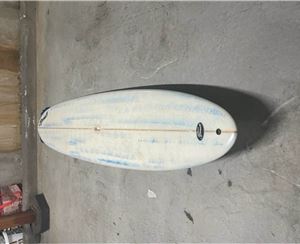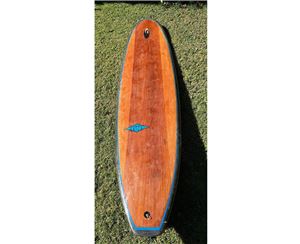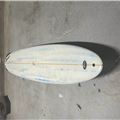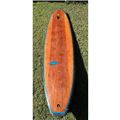DIY Surf Hydrofoils - Surf like Kai Lenny!

One of the reasons hydrofoiling has become so popular in recent years in the kitesurfing and sailing community, is that so many home builders have had success in making DIY versions out of nothing more than wood and a bit of fiberglass. One of the most popular designs is published here for free on Seabreeze.com.au, and with a couple of design tweaks, can easily be adapted to any shortboard.
Not before you get out and there with a chisel and hammer, be warned. Making a hydrofoil isn't an exact science, and it's easy to spend a LOT of time on intricate details that won't really matter for your first one. There's three things that ARE important on your first hydrofoil however, and here they are.
1: Rigidity. When you think you've put enough fiberglass/carbon on your foil. Add another 2 layers. Seriously! A little extra weight, or thickness won't hurt your foils performance, but a flexible mast or fuselage certainly will.
2: A solid base. Surfboards require a lot of reinforcement before you can safely bolt a foil to the bottom. Spend time adding several layers of Carbon, balsa or fiberglass to the top and bottom of your board. Remember, it doesn't matter about a little extra drag on the bottom of the board when it's flying!
3: The ability to tweak. The stabilizer at the back of a hydrofoil isn't adjustable like that found on a boat, so consider bolting it to the fuselage instead of fiberglassing it. This allows you to change it, or add shimmys to change the stabilizers angle of attack; if you're finding the foil is climbing or descending at different speed ranges.
With those three tips - make these few changes to the basic design linked below, to make your very own surf hydrofoil.
Surf Foil Adjustments -Enlarge the main wing. Because surfers need a foil which lifts at a slower speed. The main wing needs to be larger than in the kite-based design. Scale it up by 10% if you weigh between 50 and 70kgs. 20% if you're in the 70-80kg range. Weigh over 80kgs? Sorry. Surf foiling probably isn't for you! -Shorten the mast. Kite foils are typically set on 100cm masts, to help skip over choppy water surfaces. Surf foils only need to be 50-70cm high, which will also help stability.
Click here to view the tutorial - How to make your own hydrofoil.











